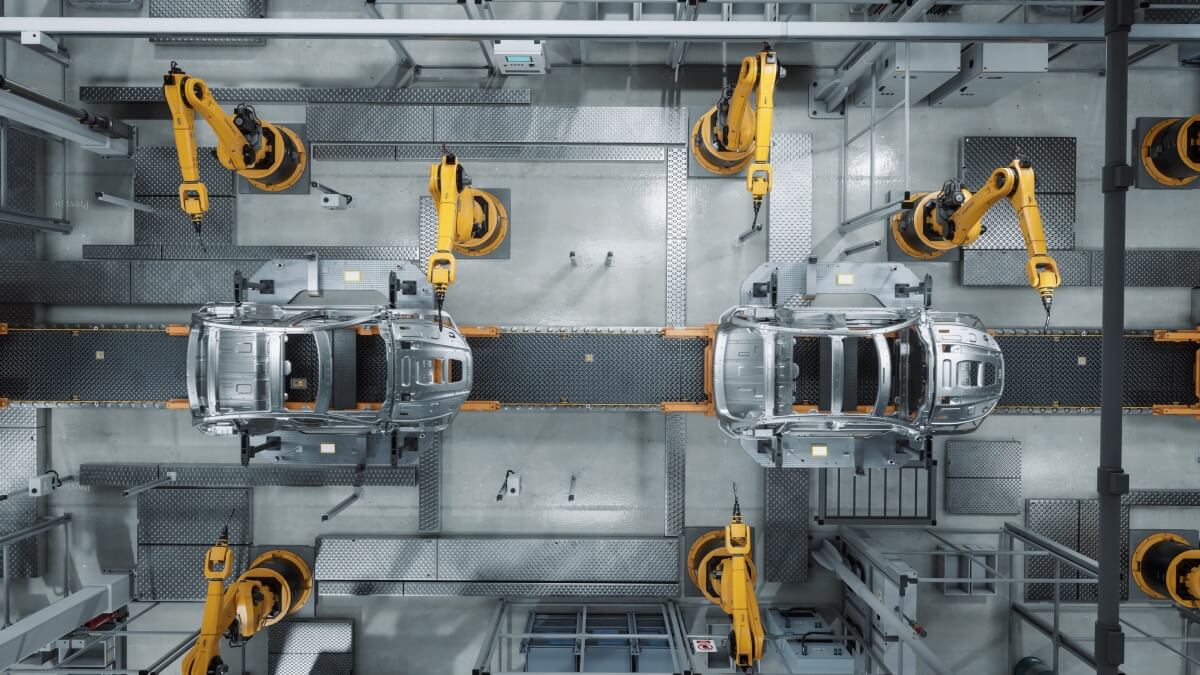Edge Computing Benefits: Overview
Edge computing is a relatively new computing method with notable benefits demonstrated in various industrial applications, such as the healthcare, construction, manufacturing, banking and finance, energy, and agricultural industries.
In this article, you will learn about the top 6 industry-relevant benefits of Edge computing and what sets it apart from other processing and data storage options. Also explored are several fascinating industry use cases that utilize computing at the network’s Edge.
6 Industry-based benefits of Edge Computing
Before we explore industry examples of Edge computing, let’s first look at the benefits of Edge computing in general.
Compared with cloud storage, which faces latency, decreased privacy protection, and relatively poor security, Edge Computing functions better, mainly because it’s a localized rather than a distributed computing method.
1. Edge computing is bandwidth savvy
Edge Computing is a method that keeps computation and data closer to the data source.
As a result, Edge computing is a bandwidth-friendly alternative to cloud computing which, accounting for all the devices constantly sending data to the overburdened cloud, is gradually slowing.
2. Edge computing reduces latency
Slow response times cease as Edge Computing stores and processes data close to users (or directly on Edge-enabled devices). This means that data doesn’t need to be sent around a network, resulting in little to no latency.
3. Edge computing unifies resources
Application developers can use the device storage available within Edge Computing to offer users services local to them.
Edge computing unifies resources that are geographically close to the user, allowing for secure personal and business storage that is accessible much faster than it would be with cloud computing.
4. Edge computing offers enhanced privacy
Enhanced privacy is one of the enormous benefits of Edge Computing.
When data is stored closer to its source, it doesn’t need to move through an outside network. Because of this, data receive less exposure to potential hackers as it doesn’t need to be saved in a centralized, commercial data center.
5. Edge computing offers better efficiency for lower costs and less energy consumption
As discussed above, computing performed locally reduces the amount of data transmitted on a network.
While this reduces bandwidth pressure and latency, it also reduces costs and the amount of energy required by local equipment. This makes Edge computing an incredibly efficient computing method in terms of costs and energy consumption.
6. Edge computing assigns clear ownership
Finally, Edge computing also assigns clear ownership to data. No one can claim your Edge-saved data as theirs since it belongs solely within your network.
Edge computing functions in sync with two primary components
Edge computing isn’t an island. It works well with both cloud and fog computing.
For instance, Edge and cloud computing work in sync within many businesses that use the cloud to analyze data and the Edge to store it, or vice versa relative to one’s business needs.
And depending on the need and function of the data, it can be processed locally at the Edge.
This, in turn, maximizes the efficiency of using the Internet of Things (IoT). Mission-critical data can be analyzed, allowing a business to choose the services they want to have running at the Edge. This will enable companies to screen data sent to the cloud, lowering IoT costs and getting the most value from IoT data transfers.
Edge Computing also syncs with a concept known as Fog Computing.
Fog computing occurs in the zone between the Edge and the cloud. It takes data from the Edge before it reaches the cloud, only to send relevant data to the cloud for storage.
While Edge and Fog computing deal with screening data before it arrives at a designated data center, Fog Computing uses a fog node or IoT gateway to process data.
Fog Computing hones in on the intelligence within a local area network, while Edge Computing focuses more on computing and processing data at the network’s Edge.
But these two can work in sync.
For instance, data can be sent through fog computing for analysis and reduction. Then Edge computing can process the data in real-time.
Applications of Edge Computing
Edge Computing has many applications that range across numerous industry sectors. The advantages of Edge computing benefit these industries in different ways while maintaining their core competency – Edge data storage and processing.
Here are some of the most prominent use cases where Edge Computing can be successfully applied:
Edge computing benefits the healthcare industry
The healthcare sector generates immense amounts of data every day. From patient data to medical equipment to crucial sensors and administerial needs, healthcare businesses need a reliable way to manage, process, and store their data.
Edge Computing helps address these issues as it aids in identifying data and streamlining it, instantly alerting clinicians of things that require immediate attention.
It also benefits the security of the hospital or clinic. By storing sensitive patient data and medical information at the Edge instead of the cloud, there’s a reduced chance of people’s healthcare data being compromised.
Edge computing helps safeguard the construction industry
Workplace safety within the construction industry is a make-or-break system that everyone must adhere to.
Edge computing can enhance and improve these efforts by storing and analyzing data from on-site safety devices, such as cameras, sensors, and digital locking systems.
Not only does this ensure the safety of employees and benefit them should anything happen on the job, but it also allows management to check that their workers are following workplace safety protocol.
Edge computing aids the manufacturing industry in several ways
The manufacturing sector applies Edge Computing for many reasons. It helps monitor manufacturing, apply machine-learning processes, detect production errors, and use real-time analytics to improve product quality.
Additionally, Edge Computing helps monitor the environment of manufacturing plants through sensors.
This allows manufacturers to make fast and efficient decisions regarding their stock and factory needs. For instance, Edge technology will alert workers to machine status changes and whether or not something has gone wrong in the production process.
Edge computing improves security for banking and finance use cases
Banking and finance are large sectors that benefit from Edge computing from a predominantly security point of view.
Banks dramatically reduce the risk of digital theft and hackers disrupting their processes by storing sensitive financial data at the Edge.
The storage of customer data and sensitive information benefits from real-time analytics and secure storage. There is a notable decrease in how long it takes to process a request through Edge computing compared to relying on the cloud for the same process.
Edge computing is helpful to the energy industry
Edge Computing in the energy industry is beneficial for catching damages that put workers and tools at risk.
Connectivity between sensors and machines allows the Edge to monitor the condition of machinery. It also possesses the ability to shut machinery down should anything malfunction.
Any problems within the machines are processed immediately and dealt with using real-time analytics. Whether that’s through an alert or shutting down the damaged machine depends on each energy company’s process.
Additionally, sensors can monitor the amount of energy generated by machines such as windmills and solar panels, providing timely data analysis.
Edge computing benefits agricultural industries
Using Edge computing in agriculture reduces the time the industry spends on individual aspects of running the business.
For example, having sensors that detect soil PH levels, nutrient density, and water usage is far simpler than having individuals check this manually.
This information can then be processed and stored at the Edge, analyzed, and sent to the relevant people for review.
Implementing Edge technology for the agricultural industry can positively influence crop yield, retain soil conditions, and ensure harvest occurs in optimum conditions.
It also helps monitor parasites such as varroa mites, which can kill entire bee populations if not detected quickly enough.
Edge computing is a modern solution that countless industries stand to benefit from
The benefits of Edge Computing, alongside some real-world applications, highlight its relevance in the modern technological age.
The list of industries that benefit from implementing Edge computing does not stop with what’s detailed here, as the Edge is a versatile and speedy data analyst that can be applied to almost any sector.
Whether you’re working in agriculture or looking for solutions to healthcare data, Edge computing can benefit you.

